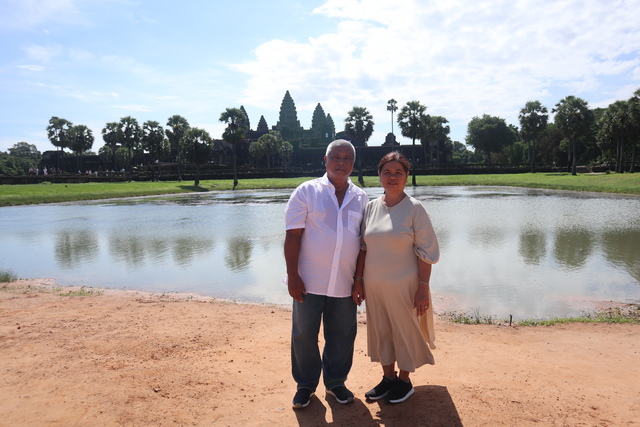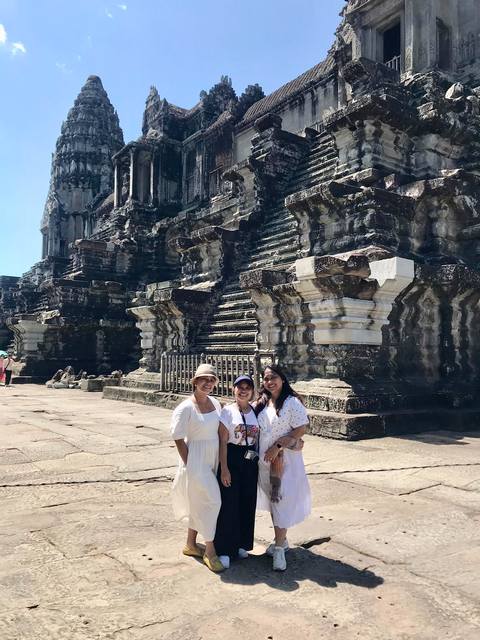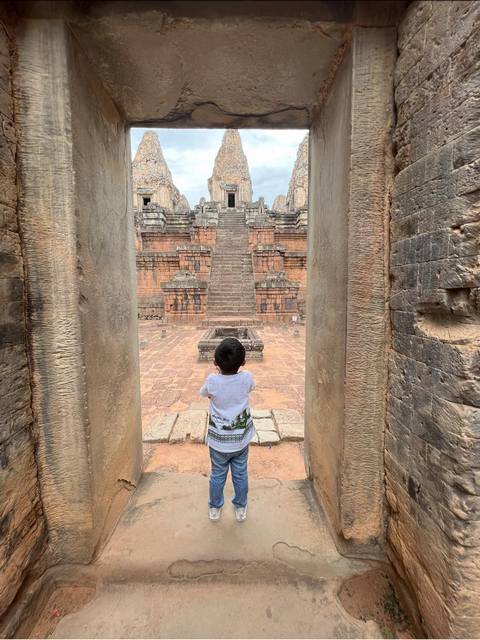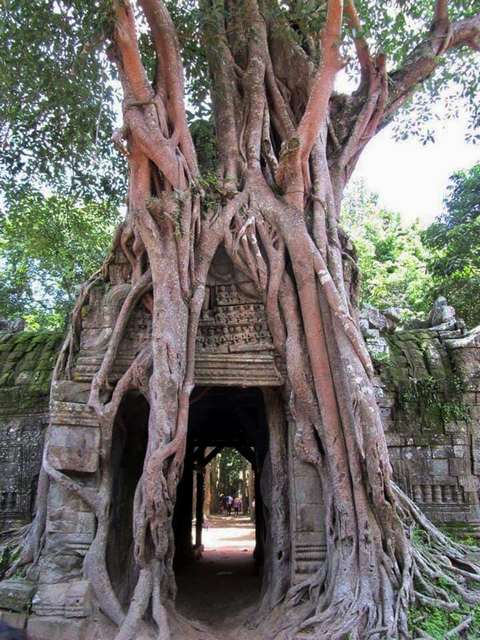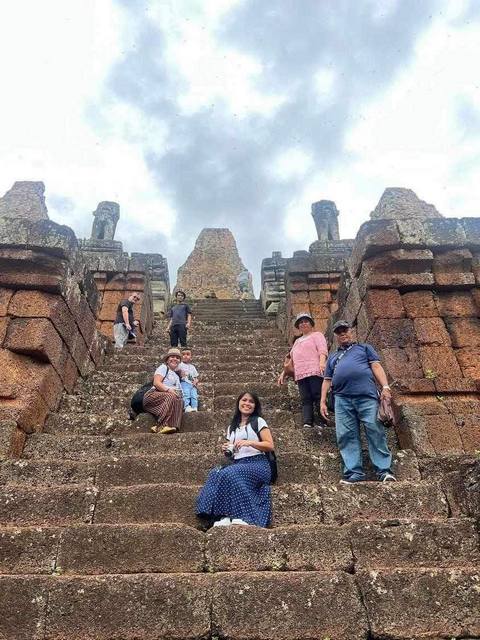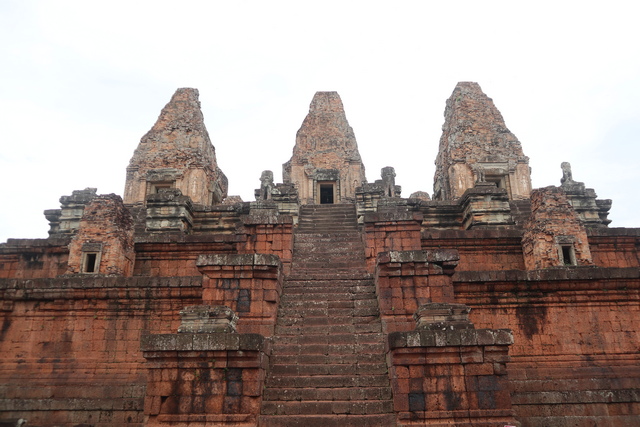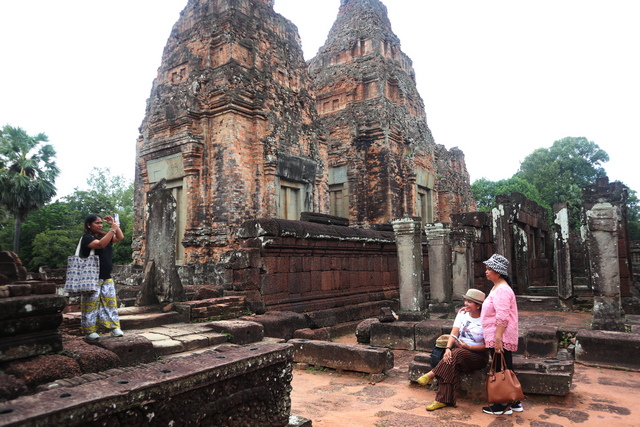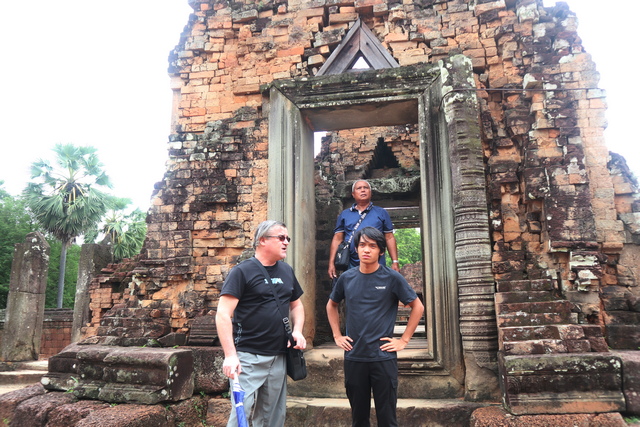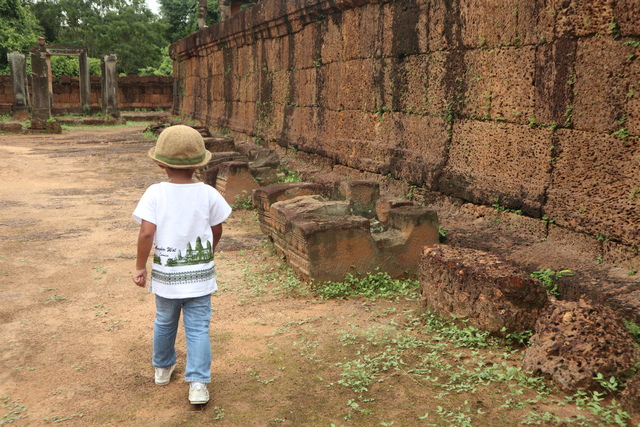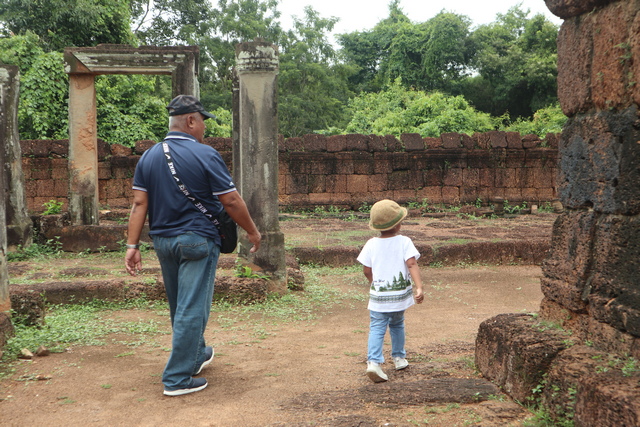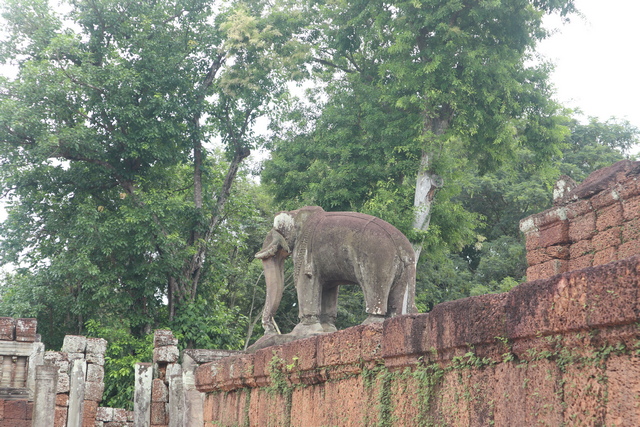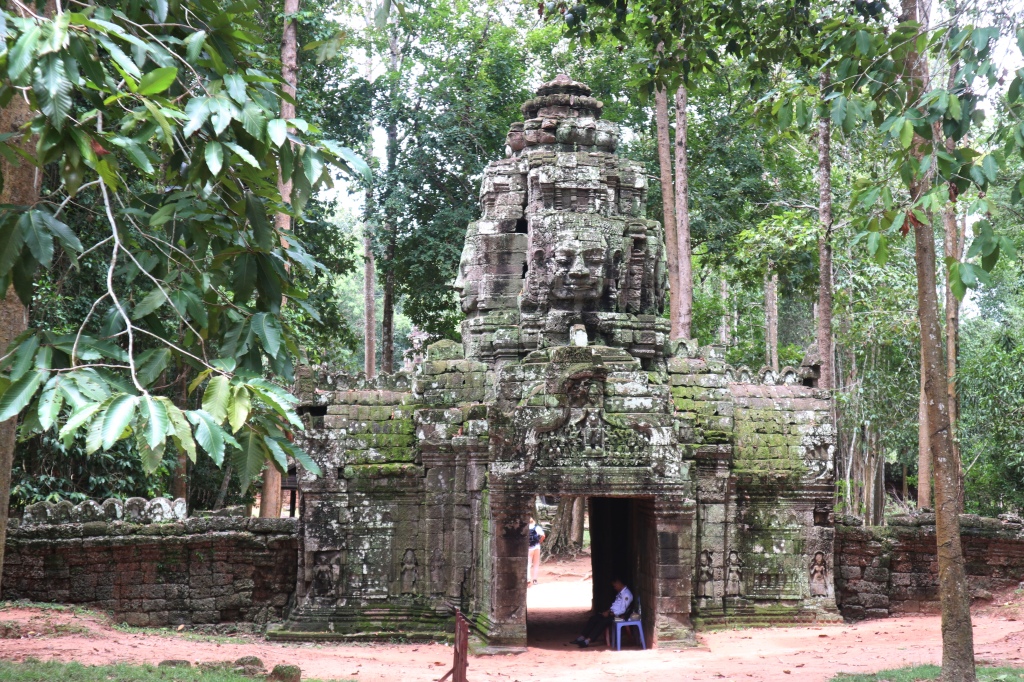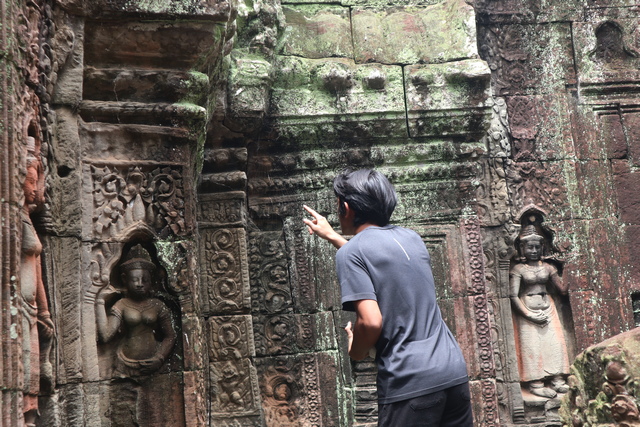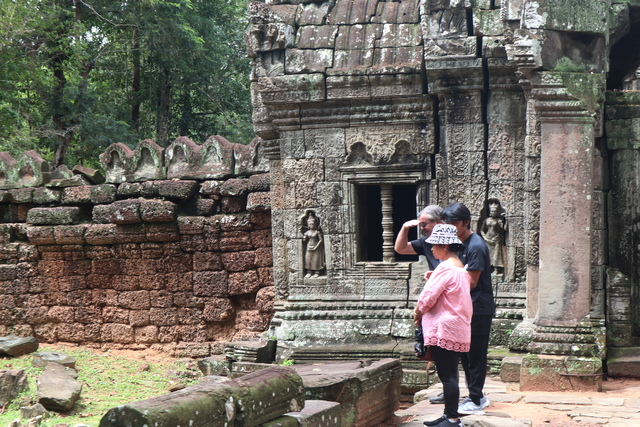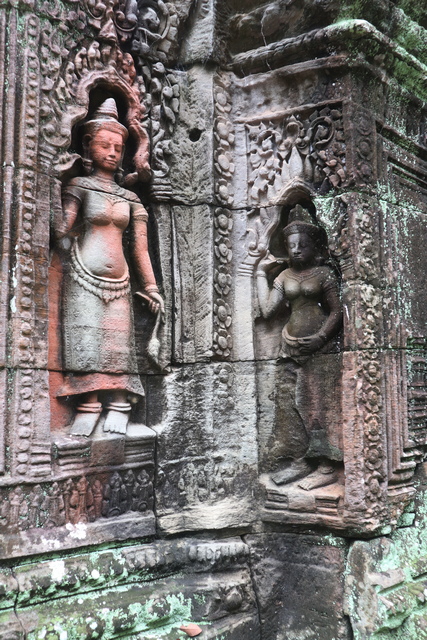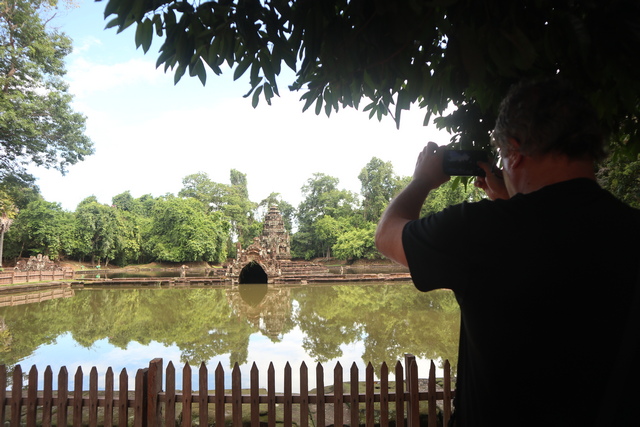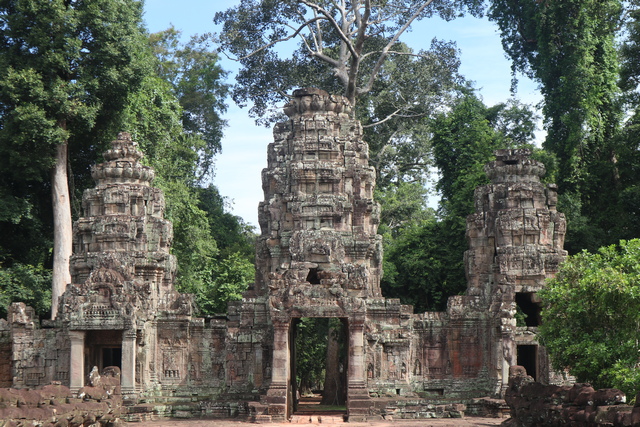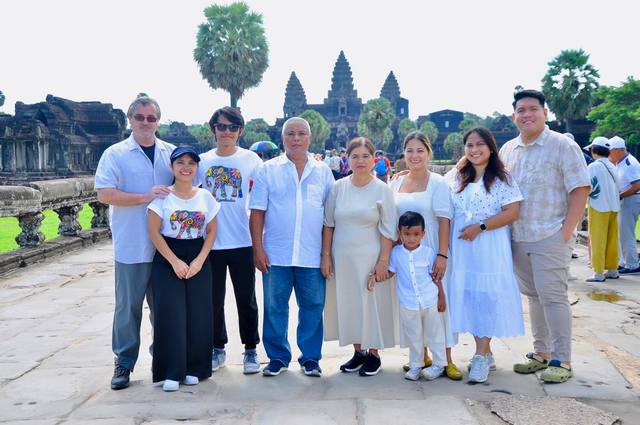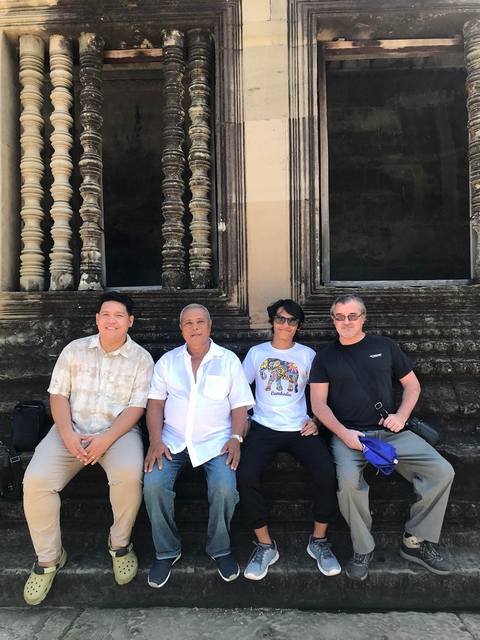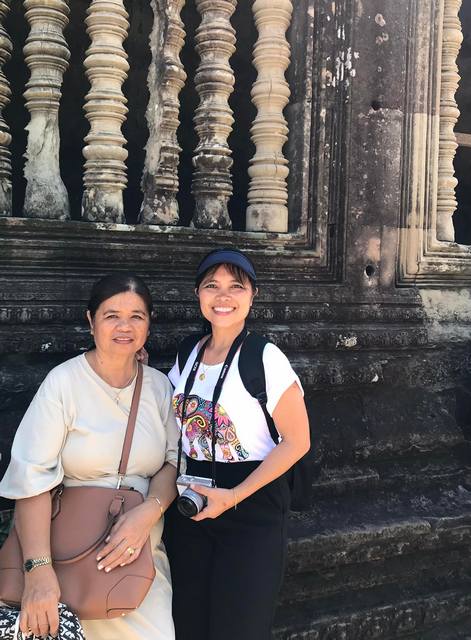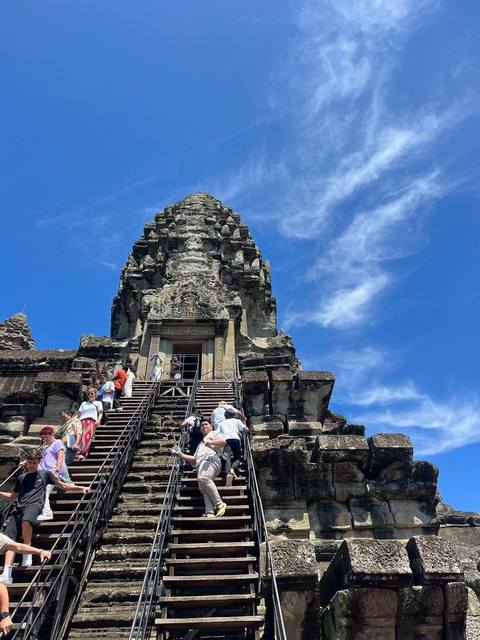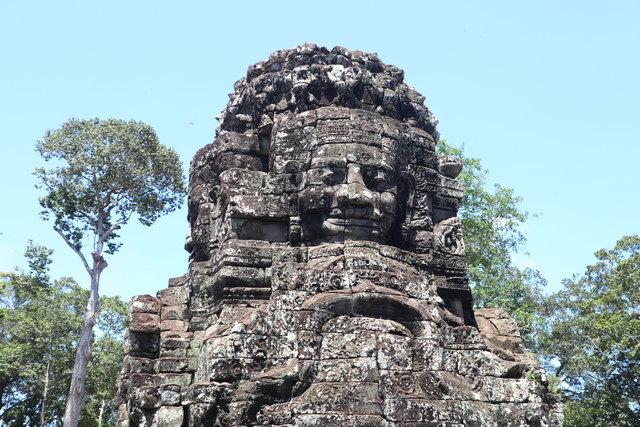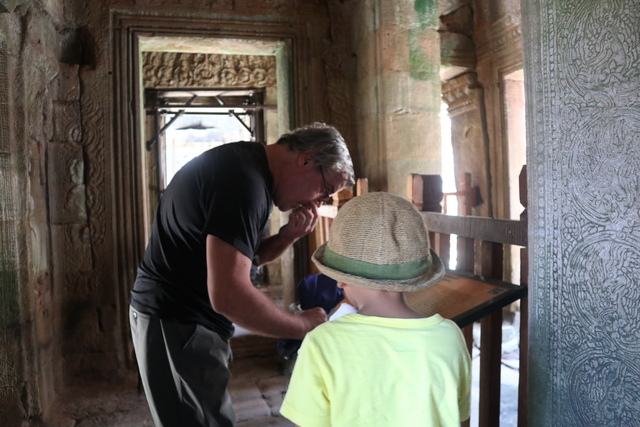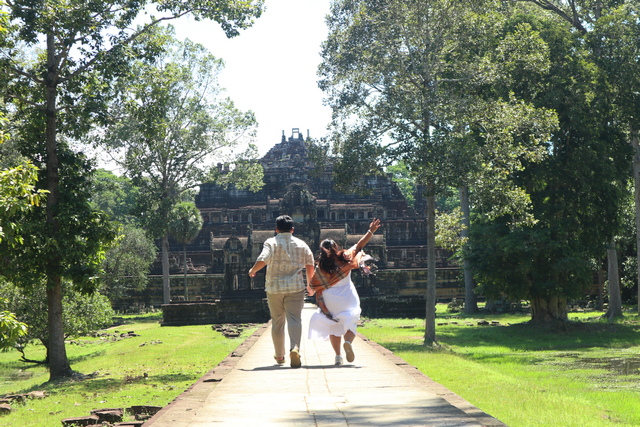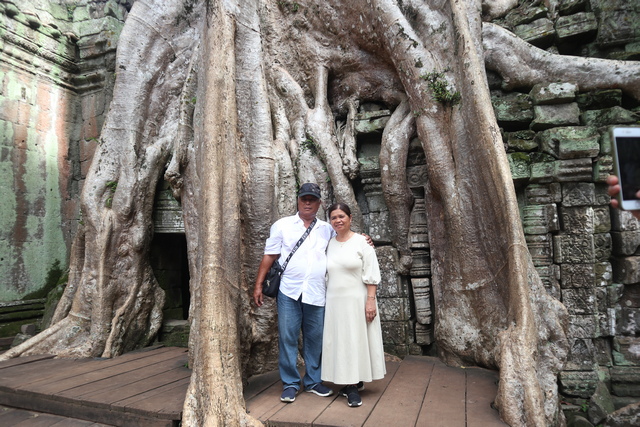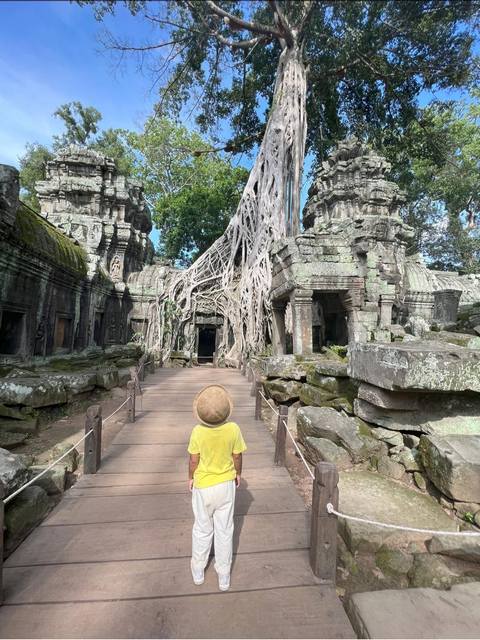When my parents accepted our invitation to visit us here in Cambodia for the first time, there was no doubt that the Angkor temples in Siem Reap made the cut — we made sure that they couldn’t leave the country without visiting the Angkor Archaeological Park, a UNESCO World Heritage Site since 1992.
The Angkor Archaeological Park is huge, encompasses over some 400 km2, including the forested area, and houses so many magnificent temples of the Khmer Empire, from the 9th to the 15th century. It is definitely worth visiting and should be part of your Cambodia to-do list, even if you only spend a day exploring. It’s truly a wonder on earth with a real sense of the history, and its overwhelming beauty, and sheer magnificence should not be missed by anyone!
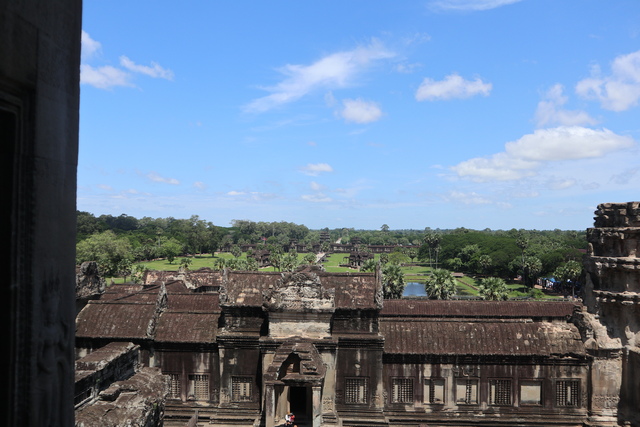
We bought a three-day Angkor Pass so that we could take the “Big Circuit Tour” and the “Small Circuit Tour” and see as many temples as we could. Fortunately, my spouse, son and I were granted a complimentary one-year Angkor pass, so we only had to purchase tickets for my parents and siblings.
We opted to complete the big circuit tour first so that my brother-in-law could join us on the small tour the following day. When my parents spied on the temples from a distance, they were wowed, and as we drew nearer to the temple, they were in awe even more. The Angkor Temple’s rich history, as well as the intricate carvings and enormous size of the buildings —particularly Angkor Wat— captivated my parents and siblings and left them in amazement.
I’m sharing the temples, both large and small, during our two-day visit to the Angkor Archaeological Park. If you have been to any of these temples or other temples, please feel free to share your thoughts, recommendations, or guidance in the comment section below for the other travelers making their way to Siem Reap.
Big Circuit Tour – Here is the order of the temples that we visited in the big circuit tour – Pre Rup (10th century), East Mebon (Mid 10th century), Ta Som (late 12th century), Neak Poan (late 12th century), Preah Khan temple (late 12th century):
The first temple of our tour trip was the Pre-Rup Temple, built by Rajendravarman II around 962. We climbed a very steep flight of stone stairs on the front of the temple to reach the top. It felt more like climbing a ladder without any handrails because the stairs are fairly high. Though weathering has severely damaged the towers atop this classic Hindu mountain-style temple, there are still some lovely carvings surrounding the doorways. However, the quality of the stone carvings is not as exquisite as that of Angkor Wat or Banteay Srei. On the plinths, there are some nice lion sculptures, and from the top, we had fantastic views of Angkor. On the way down, we used the wooden staircase on one side because it was a safer option than the stone steps.
The East Mebon Temple is a small temple that is quite similar to the Pre-Rup Temple, but with fewer steps. Its building style is very different from the other temples because it was built several centuries before them. There are multiple square terraces that ascend to the upper level, and atop them are five towers made of brick. We kept an eye out for the profusion of red and animal statues, such as the lion carvings on the terraces and the numerous elephant statues on the terraces and corners.
One of the temples that we particularly like is Ta Som, which dates back to the late 12th century, because of the incredibly detailed carvings, and it is vibrantly colored with bright green and red that add an interesting contrast to the grey stonework. As we explored through it, we passed through the striking gate with a big head. Looking at it from the opposite direction, the impressive gate with its large head reminded us again of the power of Mother Nature.
The Neak Poan Temple, which was built in the late 12th century, is charming. There is a big lake and some swampy areas, and we walked along a long walkway to see the temple. We were unable to enter or go near the temple because it is situated in the middle of a large man-made pond. We were still able to explore and walk around, though, and the sight of the temple reflecting in the water is breathtaking. We rested for a little while and took in the scenery and breeze for at least an hour.
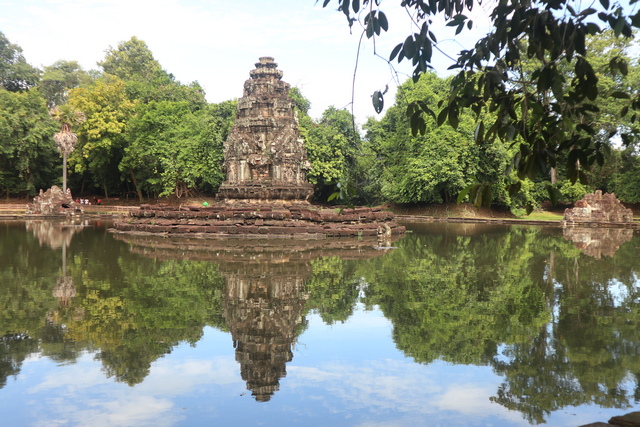
Preah Khan Temple was built in the late 12th century. It features a grand entrance with statues arranged in a tug-of-war formation. As we walked through the central hallway, which felt like it would never end, we eventually came across small areas to explore and investigate. The carvings of Apsara, the goddesses of women dancing, are still depicted in exquisite detail. When we reached the top, we were rewarded with lovely views of the ruins below.
Small Circuit Tour – The small circuit tour includes six temples. We started at Angkor Wat, then moved to Angkor Thom, which includes Bayon and Baphuon temples. Our last stop was Ta Phrom. We were supposed to visit Banteaydei and Kravan, but the intense heat and humidity had left everyone exhausted.
We spent half a day (our entire morning) exploring the Angkor Wat, the crown jewel of the entire Angkor Archaeological Park. Angkor Wat is the national symbol of Cambodia, which is also depicted on their flag. Up until today, it is still used as a place of worship. King Suryavarman II began the construction on it in the first half of the 12th century, and it is estimated that it took 30 years to complete. After we walked the very long walkway, we decided to take a few family photographs across the pond before we got sweaty from exploring the entire temple. This location offers one of Angkor Wat’s most spectacular views because you can see the symmetrical temple reflected in the calm water. Then we wandered around the temple. My elderly dad, my son, my brother-in-law, and I climbed the steep set of stairs to the temple at the center of the complex, while my husband, my mom, my two sisters, and my nephew stayed on the ground. The temple’s summit offered incredibly superb views.
While Angkor Wat has its own grandeur, Bayon Temple is a splendid temple in and of itself. It was constructed roughly a century after Angkor Wat. It is well-known for its collection of about 200 enormous stone-face sculptures, each representing a different smiling Buddha face. My parents and siblings were truly amazed by the various stone faces adorning the 54 towers. Unfortunately, due to renovations, we were unable to visit the top level, where the stone faces were most visible during our visit.
Baphuon Temple is just a few meters away from Bayon Temple. It is part of the Angkor Thom complex, along with Bayon Temple and the Terrace of Elephants. It’s a large, 35-meter-high Hindu temple that was dedicated to Hindu god Shiva. It features a long walkway with an impressive number of supporting pillars that spans a dry moat. It is also possible to climb up to the top on the steep wooden stairs to enjoy the great views. And we dashed across the bridge or walkway that resembles a real-life Temple Run game!
Ta Prohm is one of the coolest temples, and it is where the jungle meets the temple. When we visited in the afternoon, the leaves welcomed us with just the right amount of shade and a greenish glow, filtering the sun’s rays. Because of the sun’s amazing glow on the trees and the temple, we were able to take a lot of nice photos. My parents adored how the roots wound around the stone walls and were astounded by the strange way the trees grew. It also gave us a glimpse into what it was like back in the 12th century.


